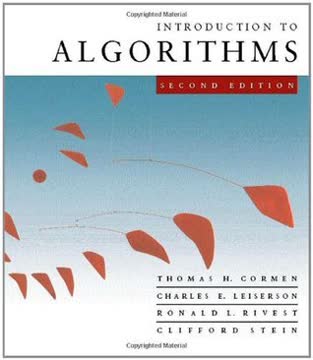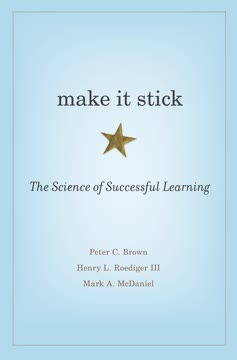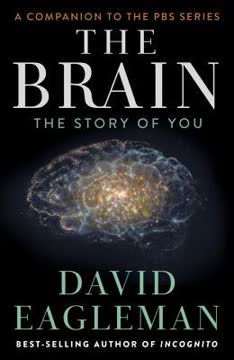Key Takeaways
1. Cognitive Neuroscience Explores the Biological Basis of the Mind
Th is see med the per-fect term to describe the question of understanding how the functions of the physical brain can yield the thoughts, ideas, and beliefs of a see mingly intangible mind.
Bridging the gap. Cognitive neuroscience seeks to understand how the physical brain gives rise to the intangible mind. It combines cognitive psychology's focus on mental processes with neuroscience's exploration of the nervous system. This interdisciplinary approach aims to unravel the neural mechanisms underlying thoughts, feelings, and behaviors.
Evolutionary perspective. The field recognizes that the brain is a product of evolution, shaped by natural selection to promote survival and reproduction. This evolutionary lens helps frame questions about brain function, considering why certain behaviors might have been advantageous for our ancestors.
Scientific method. Cognitive neuroscience relies on the scientific method, using observation, hypothesis formation, experimentation, and replication to build a solid understanding of the brain. This rigorous approach distinguishes it from earlier, less systematic attempts to understand the mind-brain relationship.
2. The Brain's Structure Dictates its Functional Capabilities
Focal brain damage causes specifi c behavioral defi cits.
Localization vs. holism. The history of cognitive neuroscience has swung between localizationism (the idea that specific brain regions are responsible for specific functions) and the aggregate field theory (the idea that the whole brain participates in behavior). Modern research recognizes that both are true to some extent.
Hierarchical organization. The nervous system is organized into a hierarchy of interconnected components, from individual neurons to complex systems. Understanding this organization is crucial for understanding how the brain functions.
Neurons and glial cells. The brain is composed of two main cell types: neurons, which transmit information, and glial cells, which provide support and modulate neuronal activity. Neurons communicate through electrochemical signals, with electrical signals traveling within neurons and chemical neurotransmitters transmitting signals between neurons.
3. Cognitive Neuroscientists Employ Diverse Methodologies
Th e advances in technology and the invention of these methods have provided cognitive neuroscien-tists the tools to study how the brain enables the mind.
Cognitive psychology. Cognitive psychology provides behavioral methods for studying mental representations, internal transformations, and information processing constraints. These methods are often combined with neuroscientific techniques to link cognitive processes to brain activity.
Lesion studies. Studying the effects of brain damage, whether from stroke, trauma, or surgery, provides insights into the functions of specific brain regions. Single and double dissociations are key concepts in interpreting lesion studies.
Neuroimaging. Techniques like EEG, MEG, PET, and fMRI allow researchers to visualize brain structure and activity in living humans. These methods vary in their spatial and temporal resolution, and each has its own strengths and limitations.
4. Hemispheric Specialization Reveals Functional Organization
Th e fundamental challenge we faced in laying the groundwork for our early editions was to determine the basic principles that make cognitive neuroscience distinct fr om physiological psychology, neuroscience, cognitive psychology, and neuropsychology.
Anatomical asymmetries. The two hemispheres of the brain are not perfectly symmetrical. Macroscopic asymmetries, such as the larger size of the left planum temporale, and microscopic asymmetries, such as differences in dendritic branching patterns, may contribute to functional specialization.
Corpus callosum. The corpus callosum, the largest white matter structure in the brain, connects the two hemispheres and allows for interhemispheric communication. Studies of split-brain patients, in whom the corpus callosum has been severed, have revealed the independent capabilities of each hemisphere.
Lateralized functions. The left hemisphere is typically dominant for language, speech, and analytical processing, while the right hemisphere is often specialized for visuospatial processing, attention, and emotional processing. However, these specializations are not absolute, and both hemispheres contribute to most cognitive functions.
5. Sensation and Perception Construct Our Reality
Th e evolutionary perspective oft en helps us to ask more informed questions and provides insight into how and why the brain functions as it does.
Sensation vs. perception. Sensation is the initial activation of sensory receptors by environmental stimuli, while perception is the process of constructing a mental representation of that stimulus. Perception is not a passive process but an active construction influenced by prior knowledge and expectations.
Sensory pathways. Each sensory system has its own specialized receptors and neural pathways that transmit information to the brain. These pathways converge in the thalamus before projecting to primary sensory areas in the cortex.
Multimodal perception. Our perception of the world is multimodal, integrating information from multiple senses. This integration can enhance perceptual accuracy and create unique sensory experiences, such as synesthesia.
6. Object Recognition is a Complex Computational Process
Th e fundamental challenge we faced in laying the groundwork for our early editions was to determine the basic principles that make cognitive neuroscience distinct fr om physiological psychology, neuroscience, cognitive psychology, and neuropsychology.
Computational challenges. Object recognition involves solving several computational problems, including viewpoint invariance, illumination invariance, and figure-ground segmentation. The brain must be able to recognize objects despite changes in viewing angle, lighting conditions, and background clutter.
Ventral and dorsal streams. Visual information is processed along two main pathways: the ventral stream, which is specialized for object identification ("what"), and the dorsal stream, which is specialized for spatial perception and action ("where" or "how").
Hierarchical processing. Object recognition involves a hierarchical process in which simple features are combined into more complex shapes, and shapes are combined into objects. This process is supported by a network of brain regions in the ventral stream, including the lateral occipital cortex (LOC) and the inferior temporal (IT) cortex.
7. Attention Selects and Modulates Sensory Information
Th e fundamental challenge we faced in laying the groundwork for our early editions was to determine the basic principles that make cognitive neuroscience distinct fr om physiological psychology, neuroscience, cognitive psychology, and neuropsychology.
Selective attention. Attention is the ability to focus on relevant information while ignoring irrelevant distractions. It can be voluntary (goal-directed) or reflexive (stimulus-driven), and it can be overt (involving eye movements) or covert (without eye movements).
Models of attention. Early-selection models propose that attention filters out irrelevant information early in sensory processing, while late-selection models propose that all information is processed to a semantic level before attention selects what to be aware of. Current models recognize that attention can influence processing at multiple stages.
Neural mechanisms. Attention is controlled by a network of brain regions, including the dorsal attention network (involved in voluntary attention) and the ventral attention network (involved in reflexive attention). These networks modulate activity in sensory cortex, enhancing the processing of attended stimuli and suppressing the processing of unattended stimuli.
8. Action Planning and Execution Involve Hierarchical Control
If it is possible to dissect all the parts of the body, to isolate them in order to study them in their structure, form and connections it is not the same in life, where all parts cooperate at the same time in a common aim.
Hierarchical organization. The motor system is organized hierarchically, with higher-level areas involved in planning and goal selection and lower-level areas involved in executing movements. The spinal cord contains central pattern generators that can produce rhythmic movements without cortical input.
Motor cortex. The primary motor cortex (M1) is responsible for executing voluntary movements. Neurons in M1 exhibit directional tuning, and the population vector provides a representation of movement direction.
Secondary motor areas. The premotor cortex and supplementary motor area (SMA) are involved in planning and sequencing movements. The premotor cortex is more heavily connected with parietal cortex and is involved in sensory-guided action, while the SMA is more connected with medial frontal cortex and is involved in internally generated movements.
9. Memory Systems Encode, Store, and Retrieve Information
Th e fundamental challenge we faced in laying the groundwork for our early editions was to determine the basic principles that make cognitive neuroscience distinct fr om physiological psychology, neuroscience, cognitive psychology, and neuropsychology.
Encoding, storage, and retrieval. Memory processing can be divided into three stages: encoding (acquiring and consolidating information), storage (retaining information over time), and retrieval (accessing stored information).
Declarative vs. nondeclarative memory. Long-term memory can be divided into declarative memory (conscious memory for facts and events) and nondeclarative memory (nonconscious memory for skills and habits).
Medial temporal lobe. The medial temporal lobe, including the hippocampus and surrounding cortical areas, is critical for the formation of new declarative memories. Damage to this region results in anterograde amnesia, the inability to form new long-term memories.
10. Emotion Influences Cognition and Social Behavior
Th e fundamental challenge we faced in laying the groundwork for our early editions was to determine the basic principles that make cognitive neuroscience distinct fr om physiological psychology, neuroscience, cognitive psychology, and neuropsychology.
Neural systems. Emotion processing involves a distributed network of brain regions, including the amygdala, insula, orbitofrontal cortex, and anterior cingulate cortex. The amygdala is particularly important for processing fear and other aversive stimuli.
Theories of emotion. Different theories of emotion generation emphasize different aspects of the emotional experience. The James-Lange theory proposes that emotions are the result of perceiving bodily responses, while the Cannon-Bard theory proposes that emotions and physiological responses occur simultaneously.
Emotion regulation. Cognitive control processes can be used to regulate emotions, either by reappraising the emotional stimulus or by suppressing the emotional response. These strategies involve interactions between the prefrontal cortex and subcortical emotion-processing regions.
11. Language Relies on a Distributed Neural Network
Th e fundamental challenge we faced in laying the groundwork for our early editions was to determine the basic principles that make cognitive neuroscience distinct fr om physiological psychology, neuroscience, cognitive psychology, and neuropsychology.
Perisylvian language network. Language processing relies on a distributed network of brain regions in the left hemisphere, including Broca's area (involved in speech production), Wernicke's area (involved in language comprehension), and the arcuate fasciculus (connecting these two areas).
Lexical access and selection. Language comprehension involves accessing word representations in the mental lexicon, selecting the appropriate meaning based on context, and integrating syntactic and semantic information.
Speech production. Speech production involves planning the message, formulating the grammatical structure, and encoding the phonological and articulatory details.
12. Cognitive Control Enables Goal-Oriented Behavior
Th e fundamental challenge we faced in laying the groundwork for our early editions was to determine the basic principles that make cognitive neuroscience distinct fr om physiological psychology, neuroscience, cognitive psychology, and neuropsychology.
Prefrontal cortex. Cognitive control relies heavily on the prefrontal cortex (PFC), which is responsible for planning, organizing, and regulating behavior. The PFC interacts with other brain regions to maintain task-relevant information, filter out distractions, and make decisions.
Working memory. Working memory, the ability to hold information in mind and manipulate it, is essential for goal-oriented behavior. The PFC plays a key role in working memory by sustaining representations of task goals and selecting relevant information.
Decision making. Decision making involves evaluating the value of different options and selecting the one that maximizes reward. The orbitofrontal cortex (OFC) is involved in representing value, while the anterior cingulate cortex (ACC) monitors conflict and signals the need for increased cognitive control.
13. Social Cognition Involves Understanding Self and Others
Th e fundamental challenge we faced in laying the groundwork for our early editions was to determine the basic principles that make cognitive neuroscience distinct fr om physiological psychology, neuroscience, cognitive psychology, and neuropsychology.
Self-perception. Social cognition begins with self-perception, the ability to understand one's own traits, beliefs, and desires. The medial prefrontal cortex (MPFC) is particularly important for self-referential processing.
Theory of mind. Understanding the mental states of others, known as theory of mind, is crucial for social interaction. The temporoparietal junction (TPJ) and the superior temporal sulcus (STS) are involved in mental state attribution.
Social knowledge. Social knowledge, including social norms and rules, guides our behavior in social situations. The orbitofrontal cortex (OFC) plays a key role in applying social knowledge to decision making.
14. Consciousness Remains a Central Mystery of Neuroscience
In science it often happens that scientists say, “You know that’s a really
good argument; my position is mistaken,” and then they actually change
their minds and you never hear that old view from them again.
The mind-brain problem. The relationship between the subjective experience of consciousness and the objective workings of the brain remains a central mystery in neuroscience.
Levels of arousal. Consciousness depends on a certain level of arousal, regulated by brainstem structures such as the reticular activating system. However, wakefulness does not guarantee consciousness, as seen in patients with unresponsive wakefulness syndrome.
Organizational architecture. The brain is a complex system with a layered architecture. Understanding this architecture, including the protocols that govern interactions between layers, is crucial for understanding consciousness.
Last updated:
Review Summary
Cognitive Neuroscience: The Biology of the Mind is a comprehensive textbook on cognitive neuroscience, praised for its clarity and depth. Readers appreciate its narrative style, colorful illustrations, and up-to-date content. While some find it dense and challenging to study from, many consider it an excellent resource for understanding the field. The book covers a wide range of topics, from basic neural structures to advanced cognitive processes. Some criticisms include its organization and occasional unnecessary humor, but overall, it's highly regarded as an informative and engaging introduction to cognitive neuroscience.
Similar Books
Download PDF
Download EPUB
.epub digital book format is ideal for reading ebooks on phones, tablets, and e-readers.
















